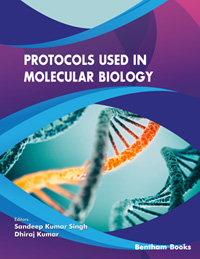Abstract
In the recent past, two dimensional gel electrophoresis has emerged as a powerful molecular biology tool for the comparative expression profiling of complex protein sample. It involves the separation as well as the resolution of diverse proteins sample on the basis of isoelectric points and molecular mass of protein in two dimension ways. In this way, it reflects the view of overall proteome status including differentiation in protein expression levels, post-translational modifications etc. Moreover, this allows the identification of novel biological signatures, which may give a particular identity of pathological background to cells or tissues associated with various types of cancers and neurological disorders. Therefore, by utilizing such tools, one can clearly investigate and compare the effects of particular drugs on cells of tissues and also one can analyze the effects of disease on the basis of variations in protein expression profile at broad spectrum. Recently, to get more error-less and accurate proteome profile, conventional 2-D gel electrophoresis has been enhanced with the inclusion of different types of protein labeling dyes which enables a more comparative analysis of diverse protein sample in a single 2-D gel. In this advanced technique (2-D-DIGE), protein samples are labeled with three different types of CyDyes (Cy2, Cy3, and Cy5) separately and combined and further resolved on the same gel. This will facilitate the more accurate spot matching on a single gel platform and will also minimize the experimental variations as commonly reported in the conventional 2D-gel electrophoresis. Therefore, in the present proteomic research era, 2D-DIGE has proved to be an extremely powerful tool with great sensitivity for up to 125 ng of proteins in clinical research volubility especially, neurological and cancer related disorders.
Keywords: 2-D-DIGE, Cancer, Cy Dyes, Drugs, Electrophoresis, Molecular biology, Molecular mass, Neurological disorder, Proteome, Protein expression, Tissues.






















